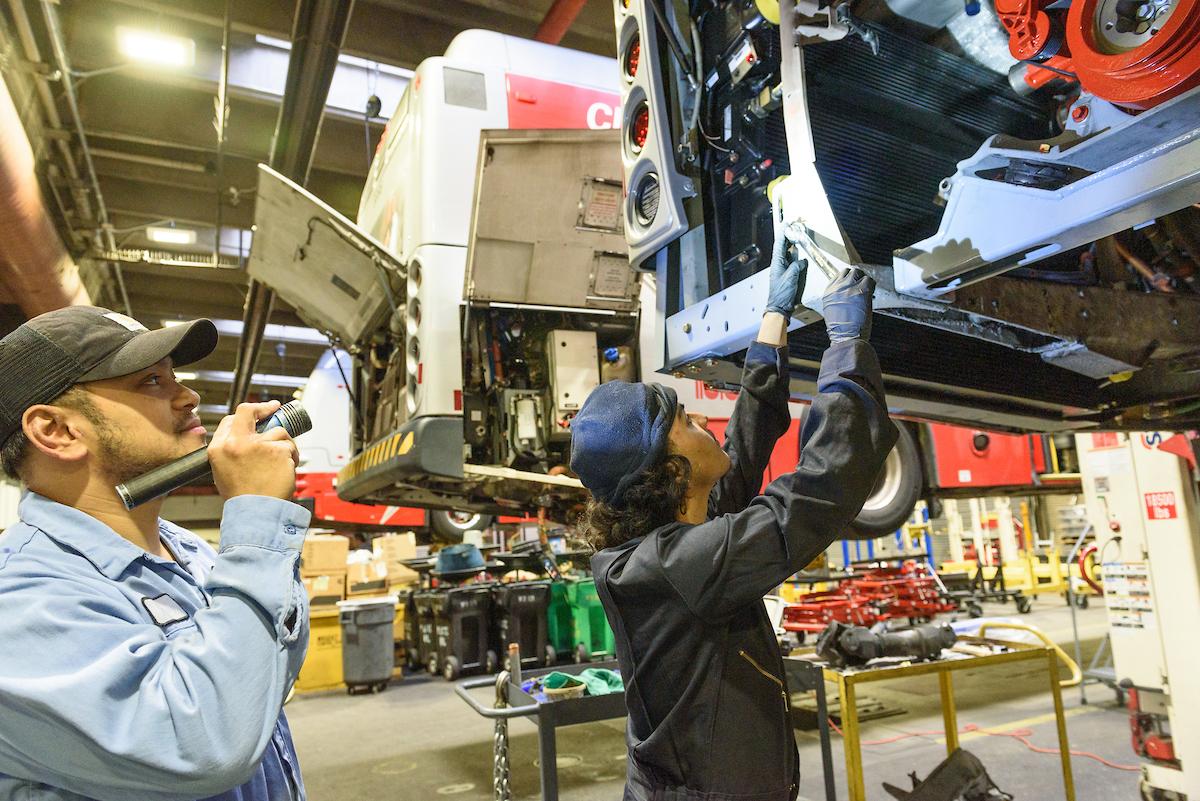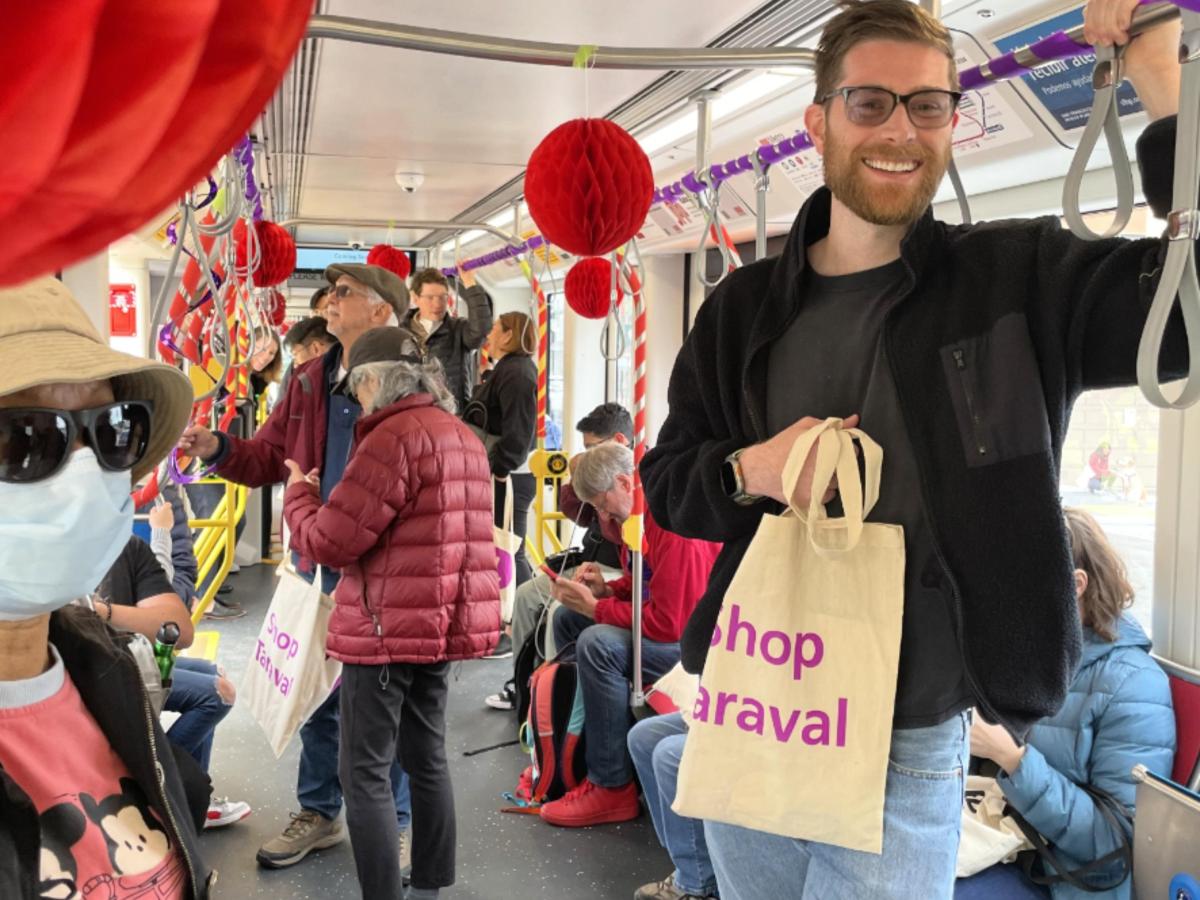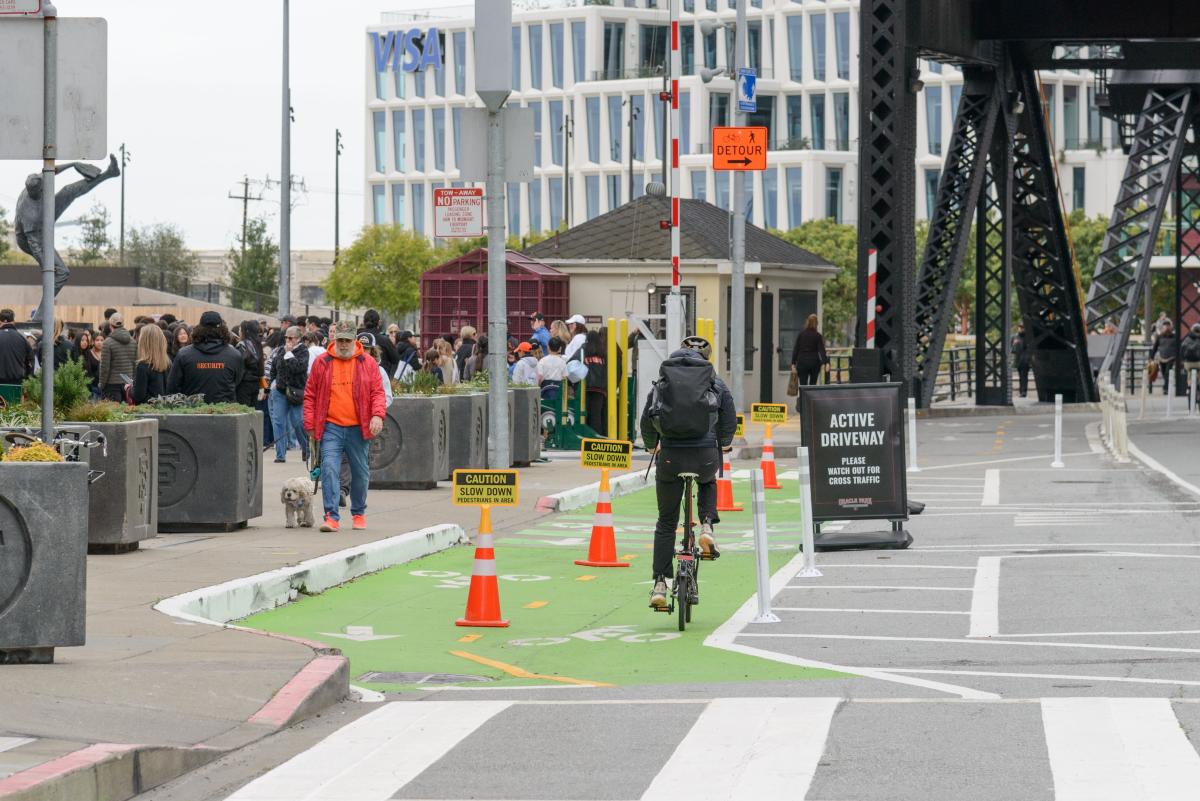
Our teams have made Muni faster, safer and more reliable than it’s ever been.
San Francisco’s symbol is the phoenix, the mythical bird that rises from the ashes of adversity. It’s a fitting symbol as the city reimagines itself after the COVID-19 pandemic. People are getting around in new ways, and we are working to build the transportation network this city needs now and in the future.
We discuss this in our 2024 annual report, Next Stop: A Thriving San Francisco. The report covers our accomplishments from July 1, 2023, to June 30, 2024.
Muni is better than ever
The pandemic changed the way people work. San Francisco has one of the largest populations of remote workers, and this has had a significant impact on the commute to downtown. But we’ve seen growing demand on routes that connect neighborhoods.
Ridership shows strong recovery
At the end of the fiscal year, our ridership was 74% of 2019 levels, among the best recovery rates for any transit agency in the country. Since then, it has grown to 78%, and we reached another milestone last month. Our average weekday ridership in September was more than half a million people.
Muni Forward reduces delays
Ridership is growing because Muni is faster, safer and more reliable than it has ever been. A large reason for this is our Muni Forward program, which marked its tenth anniversary in 2024. Over the last decade, we’ve built more than 75 miles of transit lanes and made transit improvements to 100 miles of our streets. Delays are down to one-quarter of 2019 levels. Long delays are down more than 65%.
Maintenance improvements also are making Muni faster, safer and more reliable. This includes our Fix It Week early metro closures for maintenance.

The L Taraval Improvement Project is among the upgrades we’ve made to make Muni more reliable.
Corridor upgrades
We’ve also completed several milestone projects, such as the L Taraval Improvement Project. In collaboration with other city agencies, we completely rebuilt the L Taraval track and the water and sewer lines under the street. Much of this infrastructure was more than a century old. We also built new boarding islands, overhead lines and curb ramps, and installed new signals. And we did it all on time and on budget.
We rehabilitated and repaired the Twin Peaks Tunnel. Our work ensures that this crucial 100-year-old tunnel remains safe and structurally sound for years to come.
Firm in our commitment to streets that work
We spent the last fiscal year making our streets safer for everyone who walks, bikes and rolls in this city. Transit plays a role here, too. By improving our transit infrastructure, we reduce traffic congestion on our streets. This makes them easier to navigate for people who walk, bike and ride scooters, skateboards and other mobility devices.
Our Quick-Build program allows us to make street improvements faster. Quick-Builds are reversable and cost less than traditional construction methods. This year, we finished Quick-Build projects on:
- Hyde Street in the Tenderloin
- Lincoln Way in Golden Gate Park
- 3rd Street near Oracle Park
- Bayshore Boulevard in the Bayview
- Valencia Street in the Mission
On streets with Quick-Build projects, crashes involving bicycles and people walking are down by one-third each.
This year also marks the tenth anniversary of Vision Zero in San Francisco. Vision Zero is an international policy goal to eliminate traffic fatalities, and San Francisco was one of the first U.S. cities to adopt it.
Our Vision Zero work has included painting high-visibility crosswalks, giving walkers head starts at signals, reducing speeds and daylighting (prohibiting parking within 20 feet of an intersection). These improvements have gone a long way toward reducing fatalities on our streets.
Even one death on our streets is too many. But San Francisco is one of the safest large cities in the country for people who walk and bike. We’re planning the next phase of Vision Zero, which will include 33 speed safety cameras citywide.

Active transportation is important to tomorrow's transportation network. This includes biking, walking and rolling.
Some of the other milestones on our streets in the last fiscal year include:
- 133 miles of bikeways, including 50 miles of protected bikeways, 7 miles of which were added in the last fiscal year
- 327 bikeshare stations, 25 new this year. Bikeshare trips are up 25% year-over-year, to almost 2.9 million trips.
- 74 corridors with speeds restricted to 20 miles per hour
- New side-running bike lane design in the works for Valencia Street
- Supported 616 events, from neighborhood block parties to international events, like the Asia-Pacific Economic Cooperation Meeting, that involved closing dozens of streets and rerouting transit
Advancing equity and accessibility
The transportation system of the future must serve all people, regardless of age, race, ethnicity, socioeconomic status or ability.
Part of our mission is to provide service to San Francisco’s most transit-dependent neighborhoods. Our Muni Service Equity Strategy helps us correct historic inequities in such neighborhoods as:
- Bayview
- Chinatown
- The Mission
- Oceanview/Ingleside
- Outer Mission/Excelsior
- Tenderloin/SoMa
- Treasure Island
- Visitacion Valley
- The Western Addition
The strategy helps us provide better transit service in these neighborhoods than we have in the past.
Our paratransit programs, including the Paratransit Van and the Paratransit Taxi Programs, provided more than half a million trips to seniors and people with disabilities in the last fiscal year. 93% of customers surveyed expressed satisfaction with these services this year.
We also improved our micromobility programs this year. We approved permits for Lime and Spin to provide scooter share service in the city. New this year, we required all shared scooters to have sidewalk detection technology and for both companies to provide adaptive devices, including seated scooters. These new measures and devices will improve scooter accessibility and the program’s safety, making the streets and sidewalks safer for everyone.
Other accessibility milestones achieved last year include:
- 91, 374 Essential Card Trips
- 1,457 Essential Trip Card enrollments
- 98.7% Paratransit on-time performance
- 167 Paratransit vehicles
Internally, we created a new Office of Civil Rights. Under this banner, several departments are working together to carry out our mission with equity and justice.
Responding to new technology
The transportation system of the future must embrace new technologies, some of which are already here. Waymo is providing autonomous vehicle rides throughout the city. In the last fiscal year, we coordinated citywide responses to autonomous vehicles. We continue to advocate for laws and regulations to ensure the safety of these emerging technologies.
We have launched a Curbside Electric Vehicle Charging Pilot. We want to test the feasibility of providing charging infrastructure to people who do not have their own garages. This could speed the transition to electric vehicles and help the city meet its climate goals.
We are committed to supporting San Francisco as it reinvents itself after the pandemic. We are building a transportation network for the future. One that will better serve the city’s growth and work for all San Franciscans and visitors.
You can read about our fiscal year in detail in our annual report.
Comments are for the English version of this page.